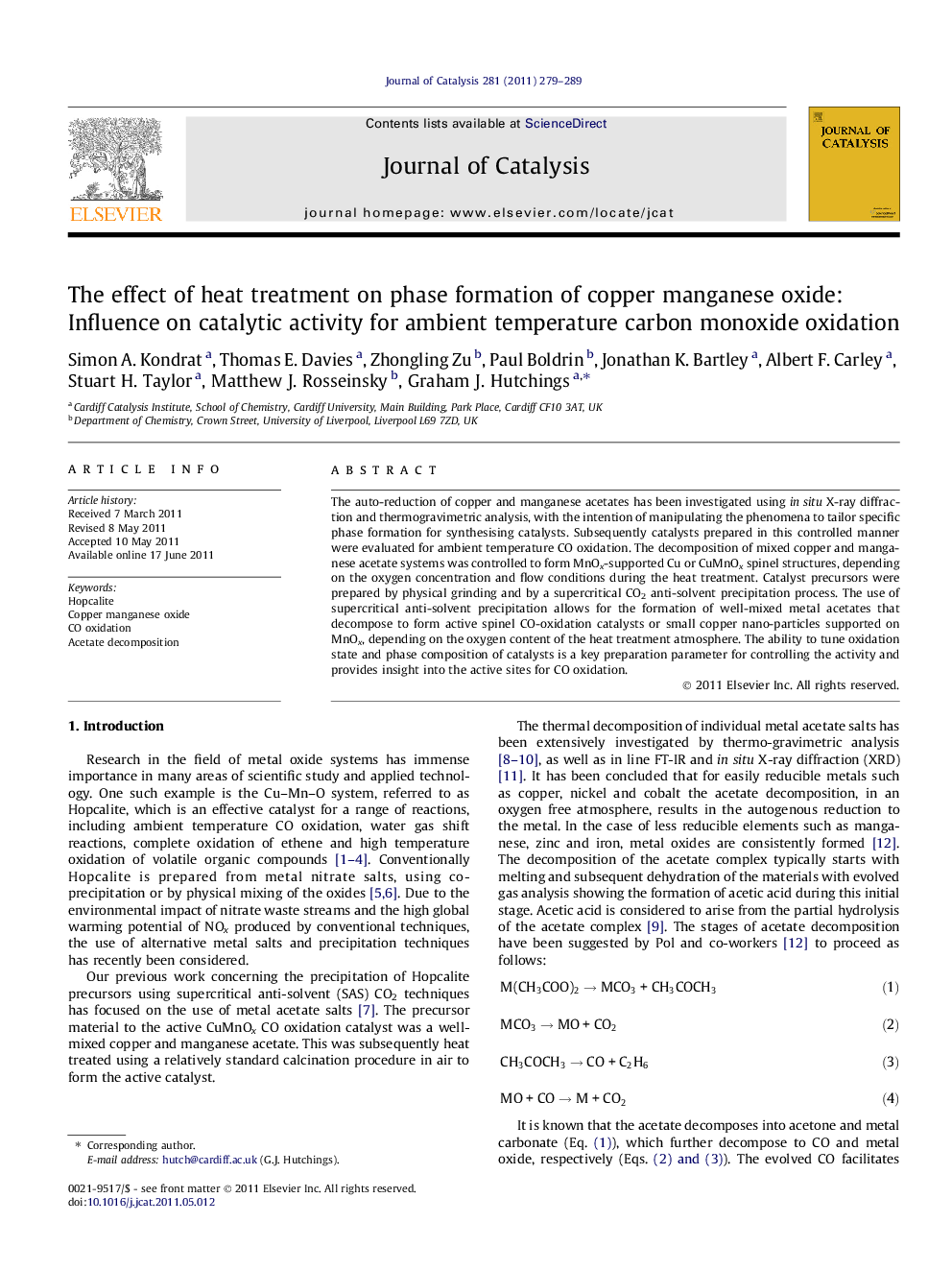| Article ID | Journal | Published Year | Pages | File Type |
|---|---|---|---|---|
| 61678 | Journal of Catalysis | 2011 | 11 Pages |
The auto-reduction of copper and manganese acetates has been investigated using in situ X-ray diffraction and thermogravimetric analysis, with the intention of manipulating the phenomena to tailor specific phase formation for synthesising catalysts. Subsequently catalysts prepared in this controlled manner were evaluated for ambient temperature CO oxidation. The decomposition of mixed copper and manganese acetate systems was controlled to form MnOx-supported Cu or CuMnOx spinel structures, depending on the oxygen concentration and flow conditions during the heat treatment. Catalyst precursors were prepared by physical grinding and by a supercritical CO2 anti-solvent precipitation process. The use of supercritical anti-solvent precipitation allows for the formation of well-mixed metal acetates that decompose to form active spinel CO-oxidation catalysts or small copper nano-particles supported on MnOx, depending on the oxygen content of the heat treatment atmosphere. The ability to tune oxidation state and phase composition of catalysts is a key preparation parameter for controlling the activity and provides insight into the active sites for CO oxidation.
Graphical abstractThe auto-reduction of copper and manganese acetates has been manipulated, to tailor specific Cu/Mn/O phases for the purpose of investigating their relation to activity for CO oxidation. A range of phases were produced from Hopcalite to discrete metallic copper particles supported by manganese oxide. The Hopcalite spinel phase was found to be required for the activity, while copper and manganese oxides were found to be inactive.Figure optionsDownload full-size imageDownload high-quality image (50 K)Download as PowerPoint slideHighlights► The use of supercritical anti-solvent precipitation allows for the formation of well-mixed metal acetates. ► The auto-reduction of Cu and Mn acetates has been controlled to tailor specific phase formation for synthesising catalysts. ► MnOx-supported Cu nanoparticles or CuMnOx spinel structures were formed, depending on the heat treatment conditions. ► The ability to tune oxidation state and phase composition of catalysts is a key preparation parameter for controlling the activity.
